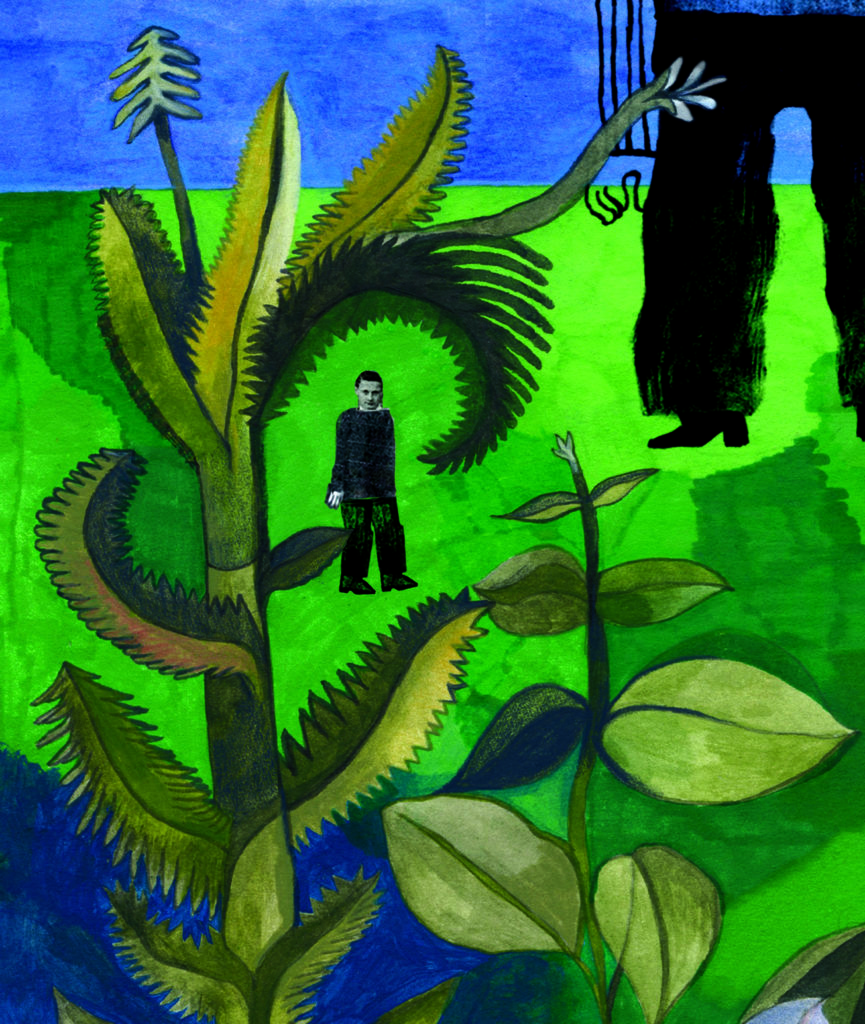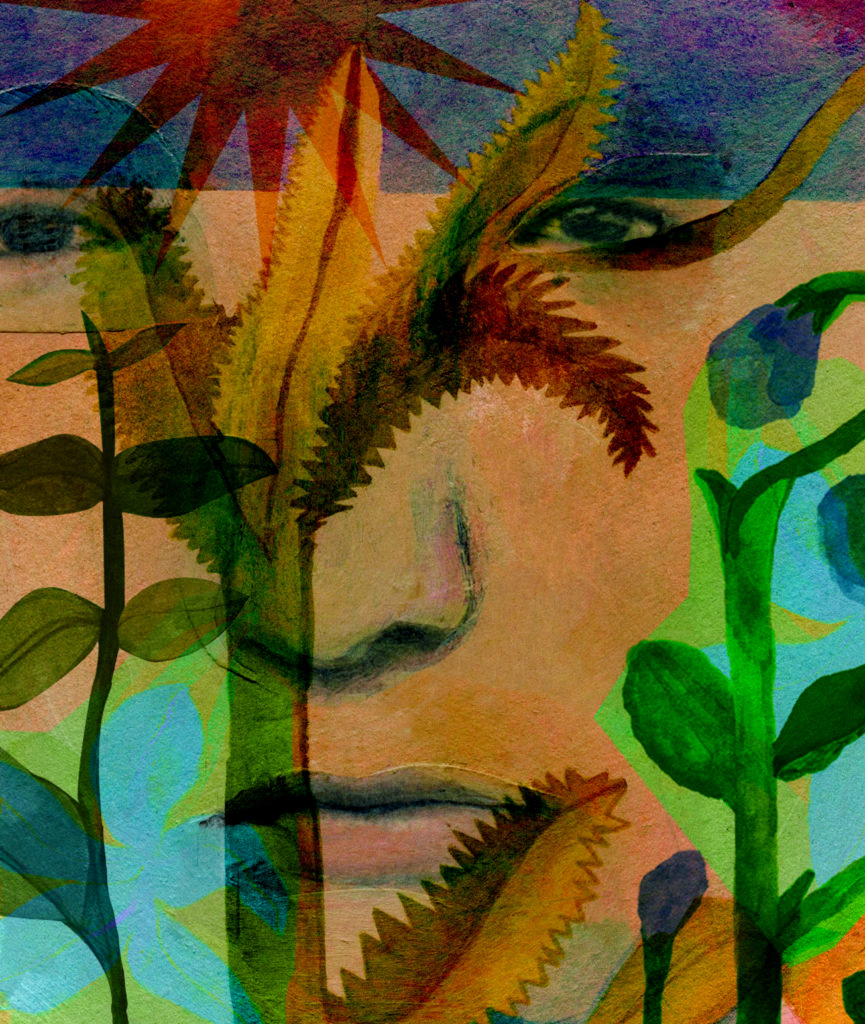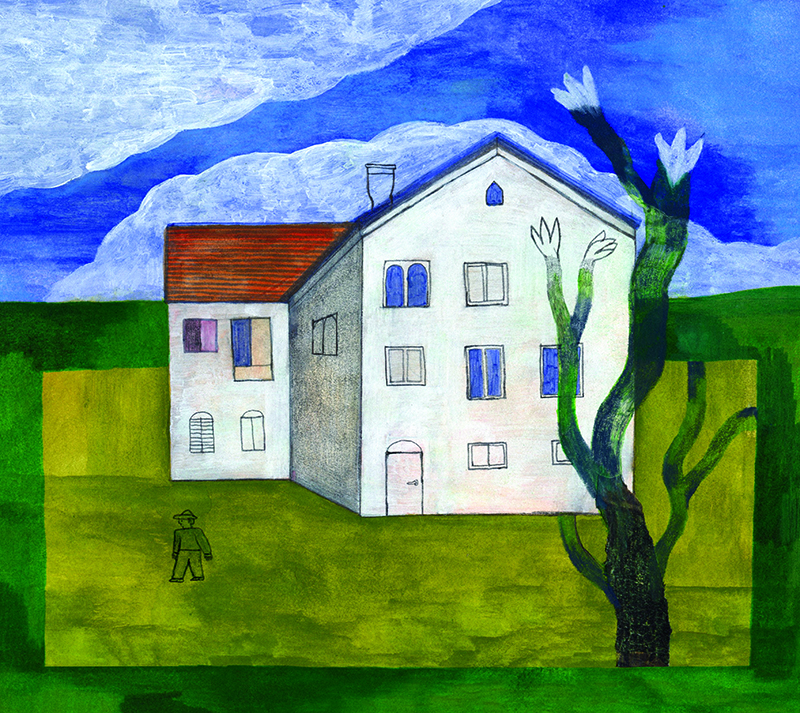A meditation on what anchors and nourishes a Filipino family when transplanted into new American soil.

1 The attentive work of gardening has become my meditation of choice during the pandemic. Moments in my small plot have offered the briefest respites. I don’t think about the news. I don’t think about anything other than the garden ritual. It’s a way for me to center myself. Amidst the chaos of this moment, it is a place for mindfulness.
2 My initial attempts at gardening had been smaller in scale. Awkward boxes rigged together with screws and nails that rusted in the weather. Small 4-by-6 piecemeal affairs put together with scrap wood. Pressure-treated lumber. Cedar posts. Boards left exposed to earth and to rain.
3 My grandparents came to live with us on a temporary basis in 1982. They were bored. Bored because I was their only grandson stateside. Bored because I didn’t speak Tagalog. Bored because they had left all their friends and relatives behind in the Philippines. There really was nothing to do in Eastern Oregon. Even I knew it. And so, they gardened.
4 I like the word “treillage.” The way it sounds like a verb. The way it looks fancy like candlelight dinners and fine wine. The way that it wants to climb up and out. My grandfather had patient hands. I’d watch him tie stray vines to a trellis he’d made. He’d carefully hold the stem of the plant straight with a curled pinky, and with his free fingers he’d wrap small bits of burlap twine around the wood and the plant to hold it all in place. The treillage he’d fashioned was simple, made of tree branches woven together with bits of string to form a grid or a mesh. Good enough for vines to hold. For vines to embrace.
5 I opted to expand the gardening enterprise to serve as a learning center for my kids. I wanted them to learn the agricultural lessons I learned growing up in Eastern Oregon, in the proximity of farms. A whole swath of valley in the aptly named Treasure Valley, dedicated to onions and sugar beets and potatoes. I wanted my kids to know where I’m from.
6 And yet I’m not from Eastern Oregon, even though I was raised there. I’m not the child of a farmer. I do not claim the lifestyle, though I can claim that the landscape made me. My family didn’t fit in. We tended to stick to our routines and stay within the immediate family. We were all unified under a common purpose — survival.
7 While my three sons were online in school, I’d spend a few minutes surfing the web for easy gardening tips. I read that trellised plants are easier to harvest. That vegetables on trellises are easier to spot. That there’s none of the back-breaking bending down over rows. I read that certain plants need that extra support and that the best trellises are both decorative and functional. I scroll from picture to picture on my browser. Watch the green leaves climb up as I scroll down, disappearing at the edges of the screen.
8 My grandparents had no intention of moving to the U.S. Like the garden they were tending, they were seasonal visitors. They were prepared to move when the time was right. When the paperwork was filled out.

Imagine the vine growing from the base of the trellis, up and out along the scaffolding designed to support it.
9 Imagine the vine growing from the base of the trellis, up and out along the scaffolding designed to support it. Imagine how it fills in the empty spaces. How, from the center, flowers bloom.
10 I didn’t have a name for what my parents and my grandparents were doing when I was younger, but now I know it’s called chain migration. Immigrants residing in the U.S. are allowed to bring their families over. The legal residents can petition the U.S. Citizenship and Immigration Services to bring children and spouses. My grandparents were waiting for the papers to clear and waiting for their children — the ones who didn’t leave during martial law in the Philippines — to come to the U.S.
11 Sometimes my grandfather needs me in the garden and sometimes he doesn’t. When he doesn’t need me, I play among the rows of corn he’s planted. I duck beneath the vast trellises he’s constructed to hoist up bitter melon, peas and other squash. I pick out the small potato bugs and watch their bodies roll into balls. I place them into a matchbox and imagine that they are a family. I lose interest. Leave the potato bug family and their matchbox home outside on a stump. I go inside to watch television. Soon it rains, and I return to the stump where I had left the matchbox. The cardboard is soaked, and the potato bugs are nowhere to be seen.
12 I know my kids are amused by my obsession with the garden — my oldest, sometimes taking an interest in the various pests I ward away with neem oil. I’ve had mishaps and some bounties. The peas I’ve trellised have risen to their full height.
13 Daily, I catch my grandfather in the garden in those early years. It was a way for him to pass the time. The garden, a way for him to measure the days. Perhaps months. Each vine he’d twine to the trellis representing hours — over, under, over, under. Representing a child of his own who he is helping support, then soon allowing to carry on in their own journey. My grandfather seems tall. Like he is carrying the sky. The sun beaming on his straw hat. His face partially in shadow.

My grandparents had no intention of moving to the U.S. Like the garden they were tending, they were seasonal visitors.
14 In the garden with grandfather, I’d be the one he’d ask to help with the weeding. He’d struggle to bend down and pull a weed or two, and with a head nod or a finger gesture, he’d ask me to offer a hand. Our communication was entirely nonverbal. Gesticulations. Facial expressions. A head tilt or a lip curl. My parents tell me that for several years they had tried to hire babysitters who spoke Tagalog so I wouldn’t lose the language. But in Eastern Oregon, the only Tagalog speakers were my mother and father until my grandparents arrived. I was attended to by black and white television: “F Troop,” “Gilligan’s Island,” “The Munsters.” Here in the garden, the language between my grandfather and I was the work of our bodies.
15 My parents knew they were petitioning my grandparents to stay with us in order to petition my aunts and uncles into the U.S. I’ve asked my parents about this several times, and they’re very pragmatic about it. My grandparents had no intention of staying, but they did know that by coming to the U.S. they would be saying goodbye to their sons and daughters who would one day become U.S. citizens. I imagined that these things were at cross-purposes — loving someone so much that you would wish them to leave.
16 Over the makeshift trellis that I had fashioned in the manner of my grandfather’s method, I have an abundance of peas. I am astounded by how fast they shoot straight up the trellis, their tendrils curling themselves around the thin pieces of twine and each other. The stems spreading skyward, looking like that plant is straightening its back, standing after sitting a long spell.
17 The netting of the trellis is composed of string, woven over and under, over and under sticks and other pieces of string. The sticks themselves are nailed together with finishing staples. It’s a sturdy structure jutting out abruptly in the plot I cleared for the garden, oddly shaped against the flat backdrop of the yard. A protuberance, yes, but also a monument of sorts. The vines twisting gently around the strings, festooning the structure with purple and yellow pea blossoms. Each flower will eventually form a small, boat-like pod, holding within it pearl-like clusters. Having shown the way, the vines will grow up and out, bursting vegetables.
18 It is difficult to talk about not talking. The quality of silence that existed between my grandfather and I. Between the hours of working in the garden and the hours we weren’t working, we lived in each other’s spaces. I did not know what he carried within, for lack of the language to share. I watch the fruiting vines gradually transition from their potential to the seeds they bear. I think of my grandfather’s patient hands, twining green life around a bean pole. How he ties small knots with the lightest touch.
19 My wife calls me in from the garden to show me an Instagram post. It’s my cousin’s account. In the frame of the phone, a sonogram image can be seen. The black and white image is somewhat difficult to make out at first, but I can see the shape of something. It’s small. Rounded. A white shape amidst a black background, the striated lines of what must be skin. A head and a belly, like a small navy bean.
20 My cousin lives in Oregon with her husband. The daughter of my uncle who was petitioned by my grandfather to come to the U.S. And so he did when he was in his early 20s. And so he married. And so his daughter, my cousin, now is expecting a child. And so the small twists of thread, to hold something at once precarious, are granted their path to rise.
21 What do I know about planting? I know that early in the season, you plant beans. That they are most successful. That they tend to do well if you start them early and if you create a nice structure or support for them, they’ll rise to meet the sun. In my garden space — in the small portion of time that I’ve carved for myself outdoors — I understand that there’s a finite amount of time to grow. I think of the urgency my family felt during our early years in this country. How it seemed, at the time, that we had so little. I think, also, of how much attention and time was spent weaving new narratives. Letting them rise on their own and bloom.
Oliver de la Paz ’94, ’95 is a professor of English at the College of the Holy Cross in Worcester, Massachusetts. He is the author of five collections of poetry, including “The Boy in the Labyrinth” and “Post Subject: A Fable.” Follow him @Oliver_delaPaz.
